Introduction
We've been enjoying an open season for a while, and yeah, the shootouts will keep on coming but it's a different kind of game now. What we have here is exactly the type that can, and will, see the hunted become the hunter.
Dragons, all three of them. Snapdragon 800-powered, 1080p-screen-flaunting, LTE-connected fire-breathing super-phones that know the Android crown is there for the taking. Which, by extension, would be the smartphone crown, period, in the eyes of the vast majority of users out there.
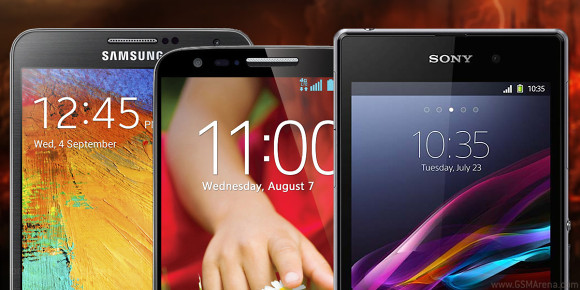
None of our three contenders will settle for a draw. They're playing to win, a position they've earned by making little or no compromise from the drawing board to the retail box.
The LG G2 has the smallest footprint of them all, but doesn't sacrifice screen estate. Just the opposite actually, it flaunts a 5.2-incher with the slimness of the bezels bordering on the insane. The G2 also has optical image stabilization - something the other two here lack.
Considering this is the smallest smartphone in the bunch, we can't help but be impressed that not only does it have a bigger display than the Xperia Z1 but also matches its 3000mAh battery. Here is the list of weapons the G2 hopes to help it win the battle.
LG G2 over Samsung Galaxy Note 3 and Sony Xperia Z1
- Almost bezel-free 5.2" IPS True-HD+ FullHD display
- The most compact of the three
- Optical image stabilization (not so useful in low light, but great for shake-free videos)
Next up is the Samsung phablet. The Galaxy Note 3 is a monster in size but state-of-the-art technology lets you keep it on a short leash with the S Pen. Snapdragon 800 is matched by the others, but there's no coming close to the 3 gigs of RAM. The 13MP camera is pretty impressive too and we have the biggest battery of the bunch.
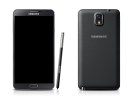
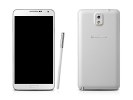
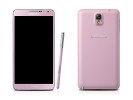

Samsung Galaxy Note 3 official images
The screen of the Galaxy Note 3 is the biggest at 5.7" and the only Super AMOLED panel on offer. The S Pen is of course worth more than just a mention, not only turning the Galaxy Note 3 into a digital notebook but adding a whole new dimension to the navigation. The 4K video recording is another leg up on the competition.
Samsung Galaxy Note 3 over the LG G2 and Sony Xperia Z1
- Biggest screen of the three
- S Pen
- AMOLED display
- 3 GB of RAM
- 4K video recording
Finally, the Sony Xperia Z1. For starters, it's almost as big as the Note 3 and way bigger than the LG G2, which has a larger screen. To make up for it, the water-tight Sony Xperia Z1 and is also dust resistant.
It has the best spec'd camera with a large 1/2.3" sensor (around 70% bigger than the smartphone standard) and 20.7MP of resolution.
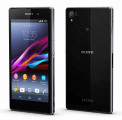


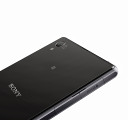
Sony Xperia Z1 official images
There is perhaps too much screen bezel but Sony must've thought it's well worth the aluminum frame and shatter-proof glass used.
Sony Xperia Z1 over the LG G2 and Samsung Galaxy Note 3
- IP58 certified - water and dust resistance
- 20.7 MP camera with larger 1/2.3" sensor
- Premium build combining stainless steel and glass
There's no easy pick here, considering they all have the latest hardware and software, but each of these smartphones has more than enough ways to connect to its audience. Unmistakably premium finish and water resistance can easily tip the scales in Sony Xperia Z1's favor if design and durability are high on your list. But then, if you want as much screen estate as humanly possible in a body that's still compact enough to be pocketable, the LG G2 has you covered.
Or, if a phablet is what you want, then look no further than the Note 3. Samsung premiered the stylus-enabled large-screened smartphones two years ago and has perfected its software to make the Note 3 the best handset with pen support you can buy.
But what if you want the all-round package? Well, you know the drill. We're going to look at camera performance, benchmarks, battery, the lot. So stick around, it's going to be an interesting ride.
Design and handling
Before we look at the design philosophies behind each of our contenders, it's important to note that regardless of differences in size and weight, build and finish, we're talking quad-core Snapdragon 800 each, battery capacities of around 3000mAh and 1080p screens with still cameras of 13MP or above. These are the base ingredients you need for a top-of-the-line droid, but each manufacturer packaged them differently in the cases of our three smartphones today.
The LG G2 did almost feel like a freak of nature at first. Holding it in hand you'd never expect what's to come at you full speed - you unlock straight into a jaw-dropping edge-to-edge display. The LG G2's screen sits comfortably in the middle - bigger than the Sony Xperia Z1's and smaller than the Samsung Galaxy Note 3's but in a shell that's brilliantly compact - smaller than both.
But the surprises the LG G2 has in store don't end there. The volume controls and the power button are placed at the back, below the camera lens and right under your index finger. While some might find it difficult to get used to, the button layout is quite comfortable and really enhances the streamlined feel of the device.
The build is entirely plastic with a glossy finish to it, which isn't everyone's cup of tea but it doesn't feel cheap or tacky.


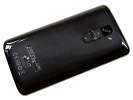
LG G2
Samsung's Note 3 has angular design, which is pretty much free of embellishments. Samsung delivered a much better Galaxy Note than last year's model without making it bigger or heavier. The Note 3 packs a bigger screen, more robust battery, better camera and processor, and has kept the three button layout and the S Pen compartment, all while shedding some weight and making the phone thinner.
The Galaxy Note 3 easily stands out among most of the recent Samsung flagship phones that have been criticized for their glossy plastic finish. For the back panel of the Note 3, Samsung decided to forgo hyperglazing in favor of a textured plastic, which emulates leather, complete with the stitching. And while emulating the looks is nothing to write home about, Samsung also got the feel right and the Galaxy Note 3 oozes refinement and quality.
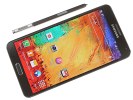

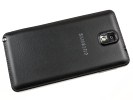
Samsung Galaxy Note 3
Deservedly taking pride in the design of its top-shelf phones, Sony have wisely decided to keep the all-glass front and back. The glass is shatter-proof and scratch resistant, covering a frame carved out of a single piece of aluminum.
The Sony Xperia Z feels really firm and well-built and doesn't seem to mind being unwieldy and heavy. It's 2 g heavier than a Galaxy Note 3 and almost as big. Some of that can be credited to the water resistance while the large camera sensor and module has certainly contributed too.
While there's no denying the Sony Xperia Z1 is a big phone it does back it up with some serious specs.
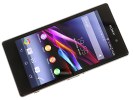
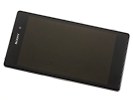
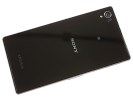
Sony Xperia Z1
Held in hand, it's more than obvious which is the most comfortable phone in the group. The LG G2 wins this one by miles by being both the most compact and lightweight of the bunch. The Samsung Galaxy Note 3 is very comfortable for its size and weight with the Sony Xperia Z1 giving you the most difficulty for the least amount of screen real estate.

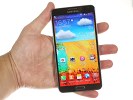
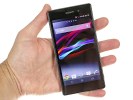
All three held in hand
The biggest phone here is also the thinnest but by as little as 0.2 mm. The Samsung Galaxy Note 3 is 8.3 mm, followed by the Sony Xperia Z1 at 8.5 mm and finally, the LG G2, which is 8.9 mm at its thickest.

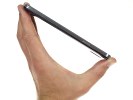
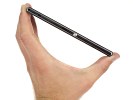
A look from the side
When it gets to the controls, the LG G2 stays true to its minimalist design. The sides of the phone are completely bare save for the ejectable SIM tray on the left. Otherwise the edges are nicely sloped and totally clean.

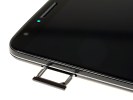
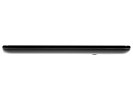
LG G2 sides
The Galaxy Note 3's sides hold the power button on the right and the volume rocker on the left side. The plastic rim around the front and back has a silvery, faux aluminum finish and the edges have recessed lines, resembling remotely the pages of a notebook.
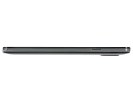
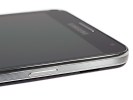
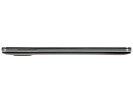

Samsung Galaxy Note 3 sides
The Sony Xperia Z1 has a dedicated camera button, placed in the lower right corner, a single-piece volume rocker above it and the now typical prominent power button on the right. The microSD card slot is located under a flap on the right side. Across on the left, there are two plastic lids covering the microUSB port and the microSIM card slot.
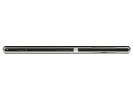
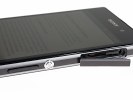
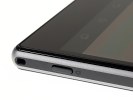
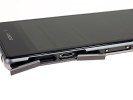
Sony Xperia Z1 sides
The top of the LG G2 features nothing but an IR blaster.

LG G2 top
The Galaxy Note 3 has an IR blaster of its own too, and it sits on its top along with a 3.5 mm headphone jack and a noise-reducing microphone.
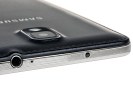
Samsung Galaxy Note 3 top
The Sony Xperia Z1 also features the 3.5 mm headphone jack at the top, thankfully, not under a sealed lid like with the Sony Xperia Z.

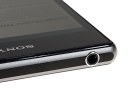
Sony Xperia Z1 top
On its bottom, the LG G2 has little grilles for the speaker and the main microphone. There's a 3.5 mm headphone jack at the bottom along with the microUSB port.
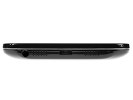
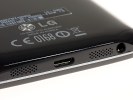
LG G2 bottom
The Galaxy Note 3 has a few surprises at its bottom side. Along with the main microphone and speaker grille, it features the world's first microUSB 3.0 port on a phone, and the S Pen compartment.
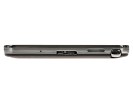
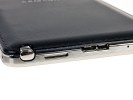
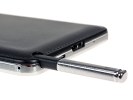
Samsung Galaxy Note 3 bottom
The Sony Xperia Z1 has no functional elements at the bottom.
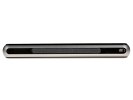
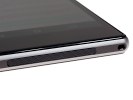
Sony Xperia Z1 bottom
Moving over to the back where the cameras are. The LG G2 has a lot going on there, it is not just the imaging-related stuff. The volume keys are either side of the power button, which has a "breathing" LED under it. Then there's the optically-stabilized 13 MP camera lens and a single LED flash.
The back panel of the LG G2 has a hyperglazed-like finish with a pattern underneath that plays with light - the pattern changes depending on the angle you are looking it. Finally, there's a brushed-aluminum LG logo at the bottom.


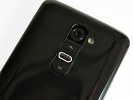

LG G2 from the back
The textured plastic at back of the Samsung Galaxy Note 3 would really have you believe the finish is actual leather. The Samsung Galaxy Note 3 comes with a 13MP still camera capable of 4K video recording. Unlike on the other two, you can pop the back cover open to reveal the 3,200mAh battery along with the microSIM and microSD card slots.

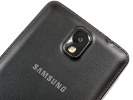
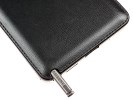
Samsung Galaxy Note 3 from the back
The Sony Xperia Z1 has a very clean but premium-looking all-glass back. The 20.7MP camera lens is nicely recessed within a steel ring. The single LED flash is right under it.

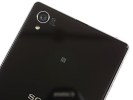
Sony Xperia Z1 from the back
Now, splitting the win three ways isn't just us going the way of least resistance. All three obviously have their flaws but we do believe they're vastly outweighed by the benefits. The LG G2 hasn't got a memory card slot, the Z1 is too big for its screen size, and the Note 3 is a phablet - which is to say, way too big for many people.
Yet, clever optimizations for single-handed use make the Note more comfortable to operate than some phones with far smaller screens. The edge-to-edge screen in a package as compact as the LG G2 will make it easier for many users to live without memory expansion. The looks and feel, and the water-resistance of the Z1 will probably make you forgive the overly ample bezels.
Yes, compromises have been made by all three manufacturers but could have they done a much better job? We don't think so.
Winner: LG G2. That kind of screen real estate in a body this size. Enough said. In terms of screen to surface ratio and pocketability, the LG G2 is deservedly the winner. The experiment of moving the hardware controls around back worked out fine and the solid battery backup in a compact body is another point earned.
Winner: Samsung Galaxy Note 3. It's a phablet and you cannot hold size against it, but even so, the fact that it packs a bigger screen and battery into a smaller body than the previous generation is admirable. More importantly though, although it accommodates a stylus and has a USB 3.0 port, the Note 3 is still slimmer than the Xperia Z1. The Note 3 is also the only one with a removable battery, and has expandable memory, which the LG G2 lacks.
Winner: Sony Xperia Z1. If you're paying for a high-end gadget, it'd better look like one. Easily, the best looking gadget of the three isn't obviously the one with the best ergonomics, but aluminum and glass is a combination none of the others can match. There's memory expansion here too, which is no small feat considering the Z1 is water and dust-resistant. There you go, premium build and looks and IP58 certification are as good arguments as any in favor of the Z1.
Displays
The displays on all three of our contestants are top of the line, specs-wise. Each of them sports at least 5 inches of diagonal and 1920 x 1080 pixel resolution. The pixel density on each of the three displays is close to or even above 400 ppi, so it's safe to say that every image will be crisp and clear.
The LG G2's has a 5.2" True HD-IPS + LCD display that's good for around 424 pixels per inch. The Galaxy Note 3 uses a 5.7" Super AMOLED screen adding up to around 386 ppi, whereas the Sony Xperia Z1 goes for a 5" Triluminous display with the X-Reality engine and being the smallest display of the three, it also offers the highest pixel density - 441 ppi.

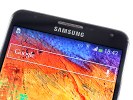

The displays
All but the Galaxy Note 3 use the standard RGB matrix with an equal number of red, green and blue pixels. The Galaxy Note 3 has a PenTile matrix, which has two subpixels per pixel. In theory this matrix is inferior as it may result in dottiness, but that stopped being an issue when pixel densities crossed the 300ppi mark. So while you might notice that the Note 3 is not quite as sharp as the other two if you look from way close than is comfortable - the three are virtually on par at normal viewing distances.



The display matrices
So let's look at the numbers from our dedicated display tests. The Samsung Galaxy Note 3 has the clear advantage when it comes to contrast ratio and depth of blacks. Because AMOLED screens can switch individual pixels off, the blacks are as deep as they get. This also means that under ideal circumstances, contrast is practically unlimited. The weakness of AMOLEDs is the brightness, where they fail to match LCDs without breaking the power bank.
The LG G2's display has the upper hand in brightness but its contrast slightly degrades when you go all the way up to 100% brightness. Still it's contrast is, for all purposes practical, equal to that of the Sony Xperia Z1.
| Display test | 50% brightness | 100% brightness | ||||
| Black, cd/m2 | White, cd/m2 | Black, cd/m2 | White, cd/m2 | |||
| LG G2 |
0.10
|
149
|
1522
|
0.45
|
667
|
1495
|
| Samsung Galaxy Note 3 |
0
|
149
|
∞
|
0
|
379
|
∞
|
| Sony Xperia Z1 |
-
|
-
|
-
|
0.38
|
580
|
1513
|
Outdoors, the light tends to be stronger and the sun would often shine right on your phone's display. That's when the contrast deteriorates and the best thing a manufacturer can do is use a less reflective glass and rely on the screen brightness to overcome that.
Because AMOLEDs have one glass layer less than conventional LCD displays the Samsung Galaxy Note 3 has a clear advantage in screen legibility in direct sunlight, even though its brightness may not be class-leading. The Sony Xperia Z1 is close behind. The G2 can still be operated trouble free in the sun, but the colors of its screen get washed out and it loses more of its brilliance than the other two.
When it comes to viewing angles, the LG G2 and the Samsung Galaxy Note 3 are so great that it's next to impossible to tell them apart. Both screens make the icons and images look as if painted on top of the glass. The Sony Xperia Z1 is a step up from Sony's prior flagships but is still notably behind the other two.
Finally, in terms of color rendering, the LG G2 offers nice natural colors, although it offers no choice of screen modes. The Samsung Galaxy Note 3 comes punchy and oversaturated by default, but you can use its screen modes to tune that down for a very natural look. The Xperia Z1 also has fairly accurate color reproduction, which can get a boost out of the X-Reality engine.
Winner: Samsung Galaxy Note 3. The Super AMOLED display on the Galaxy Note 3 is our choice here. It's much bigger than the displays of the other two, it has superior contrast, naturally deep blacks and the unmatched flexibility of screen modes. You can pick between nicely saturated, punchy colors that just pop out or natural colors that are great for photo editing. And at this resolution and pixel density the once objectionable PenTile matrix is no longer an issue.
Runner-up: LG G2. The LG G2 has a spectacular display with great colors, brightness and contrast. It came in last in the sunlight test, but the larger size and the better viewing angles helped it edge out the Xperia Z1's Triluminous screen.
Third place: Sony Xperia Z1. The Sony Xperia Z1 has the best screen the company's smartphone lineup has seen, but the less than perfect viewing angles take away some of its high-end vibe. It's not a screen anyone will be unhappy about, but it comes slightly short of the other two participants here.
Battery life
With screens this big and beefy chipsets, the three contenders have no choice but to go with ample batteries if they want to offer decent battery life. The LG G2 has a 3,000mAh Li-Po battery, matched by the Sony Xperia Z1, while the Galaxy Note 3 has a slightly larger 3,200mAh juice pack.
We're done with the tests of all three devices so we're going to break down the performance again here. We start with talk time, where the Sony Xperia Z1 takes the lead with a 26:53h, which is almost two hours better than the second best, LG G2. The Samsung Galaxy Note 3 surprisingly came last here with a score of just 18:12h - certainly impressive, but not quite up to par with the other two.
Combined with the stand-by times that we've measured, the Samsung Galaxy Note 3 managed an overall rating of 75h. The LG G2 follows with 62 hours and, finally, we see the Sony Xperia Z1, which started on a high note but ended up with only 53 hours.
The Samsung phablet has another advantage over its rivals - its battery is user replaceable. This means that you can easily change a dead or defective unit, or always carry a spare for those cases when every drop of juice is critical.



Winner: Samsung Galaxy Note 3. Not only is this the one to score the highest rating, but also the only one to feature a replaceable battery.
Runner-up: LG G2. The LG G2 was actually a much closer second than its score suggests. Its stand-by performance let it down somewhat, but it did great in the individual tests - something that matters quite a lot to power users.
Third place: Sony Xperia Z1. The Xperia Z1 got a great talk time score but then posted mediocre web browsing and video playback scores. Its overall performance is certainly good, but it's not quite up there with the other two.



